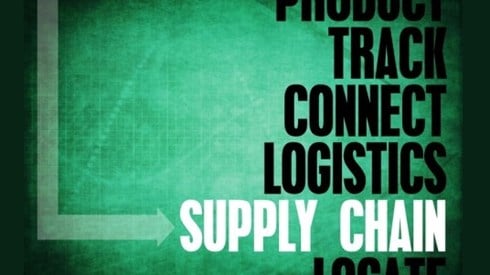Supply Chain Losses Averted! The Secret to Keeping Your Business Moving

October 02, 2019

From the Team at Capstone Associated Services, Ltd.
You've got to spend money to make money. And you do. The money you have invested pays for overhead, insurance, a dependable supply chain, and more. You've put skin in the game to ensure that your business runs without glitches, hiccups, kinks, or stagnation. But as with any good intention (and the capital to back it up), you cannot anticipate every possible scenario that may affect your business. Even in the case of franchises, there are supply chain risks that can disrupt the ebb and flow of your operation. What would you do if your raw materials suddenly stopped being produced or delivered? Would this scenario cause annoying delays, or would it completely cripple your business?
Would your existing insurance cover your specific supply chain risks adequately? Forming a captive insurance company could address these risk factors and circumvent business interruptions.
Staving Off Supply Chain Risks at the Source
From a 30,000-foot level, a conventional insurance policy could preempt supply chain catastrophes with the appropriate provisions. Contingent business insurance (CBI) extends property and casualty insurance coverage, protecting against losses resulting from damage to the policyholder's suppliers, receivers, distributors, etc. If an insured’s property reveals a particular risk exposure, it can cover its supplier or distributor (e.g., a devastating fire to a manufacturing plant). In addition to CBI coverage, many property insurance policies also contain coverage for extra expenses that a policyholder incurs as the result of a covered event. Seemingly, it is the perfect combination of primary and secondary risk coverage; financial safeguards that, in general, would mitigate a supply chain breakdown. As attractive as this particular risk management tool can be at the onset, there are important limitations that a policyholder must consider before making a commitment.
The trigger for conventional property and casualty risk coverage on the supply chain side must be the same as what is written in the policy for the insured's policy. And yes, the CBI portion would be underwritten very carefully by conventional underwriters. But the added work would come at a high premium and most likely would not cover some specialty product manufacturers or distribution centers.
Also, CBI provisions require that the damage be suffered by a "direct supplier of goods." A policyholder, therefore, should be careful in describing its supply chain to avoid later disputes regarding whether a supplier is a "direct supplier" to the policyholder. Further, the question of what constitutes a supplier within CBI coverage is not always clear. In Park Electrochemical Corp. v. Continental Cas. Co., 04 CV 4916 (E.D.N.Y., Feb. 16, 2011), Judge Eric Vitaliano, of the US District Court for the Eastern District of New York, found that the term "direct suppliers" was ambiguous and ordered trial on the issue of whether a foreign facility owned by the insured could be considered a "direct supplier" of goods to the insured for purposes of CBI coverage1 This ambiguous language can create gaps in risk coverage.
Coverages written under a captive insurance company policy can allow for specific coverages to be written for a specific manufacturer, distributor, etc., and for specific risks with broader coverage. These tailor-made coverages eliminate gaps and address supply chain risks at the source—manufacturers of raw materials, development/refinement companies, and distributors.
Learning from the Past
A high-voltage electricity line in New Mexico was struck by lightning on March 17, 2000. The resulting statewide power fluctuation led to a fire in Albuquerque in a fabrication line of the Royal Philips Electronics radio frequency chip manufacturing plant. The fire was small and was quickly put out, but it contaminated millions of chips and halted the manufacturing process. The manufacturer had two major clients: Nokia and Ericsson, giants in the phone-hardware industry. If not for the fire, these clients would have produced chips for several thousand cell phones. Officials at Philips estimated a weeklong disruption in chip manufacturing, but the recovery ended up being much longer.2
Fortunately, Nokia rebounded. Within a year, the company’s market share grew 2 percent. The company made provisions to buy chips from another one of its primary supplier's plants. Products were reengineered so they could use chips made by other manufacturers.3
Ericsson, however, experienced a different fate. Its business slowed to a trickle, resulting in an annual loss of over $1.6 billion and a 2 percent market share decline. It was forced to consolidate and merge with electronics giant Sony—they went in 50-50 on its handset design and marketing. For Ericsson, there was no contingent business insurance policy to speak of—and certainly, no captive to rely on.4
Of course, this is an extreme example. Ericsson is a huge corporate entity, and the ramifications were dire for the long-term health of its operations. But for the midmarket, supply chain risks are a growing concern.
Threats to production plants can result in major delays in your supply chain, or they can compromise your product indefinitely. Knowing the location of your supplier's production facilities and the origin of their raw materials can help you assess the threat level to your supply chain. Ensuring that a supplier can deliver supplies consistently is integral.
Exploring the formation of a captive insurance company is the smartest move you can make to ensure that your business keeps moving, regardless of where breakdowns occur. It is one of the most sophisticated risk management tools available to the midmarket right now.
- "United States: Maximizing Insurance Coverage Due to Supply Chain Disruptions," by Nicholas J. Zoogman and Jeremy M. King, April 20, 2012, Mondaq.com.
- "The Fire That Changed an Industry: A Case Study on Thriving in a Networked World," by Amit S. Mukherjee, October 1, 2008, Pearson Education, Informit.
- Ibid.
- Ibid.
October 02, 2019

